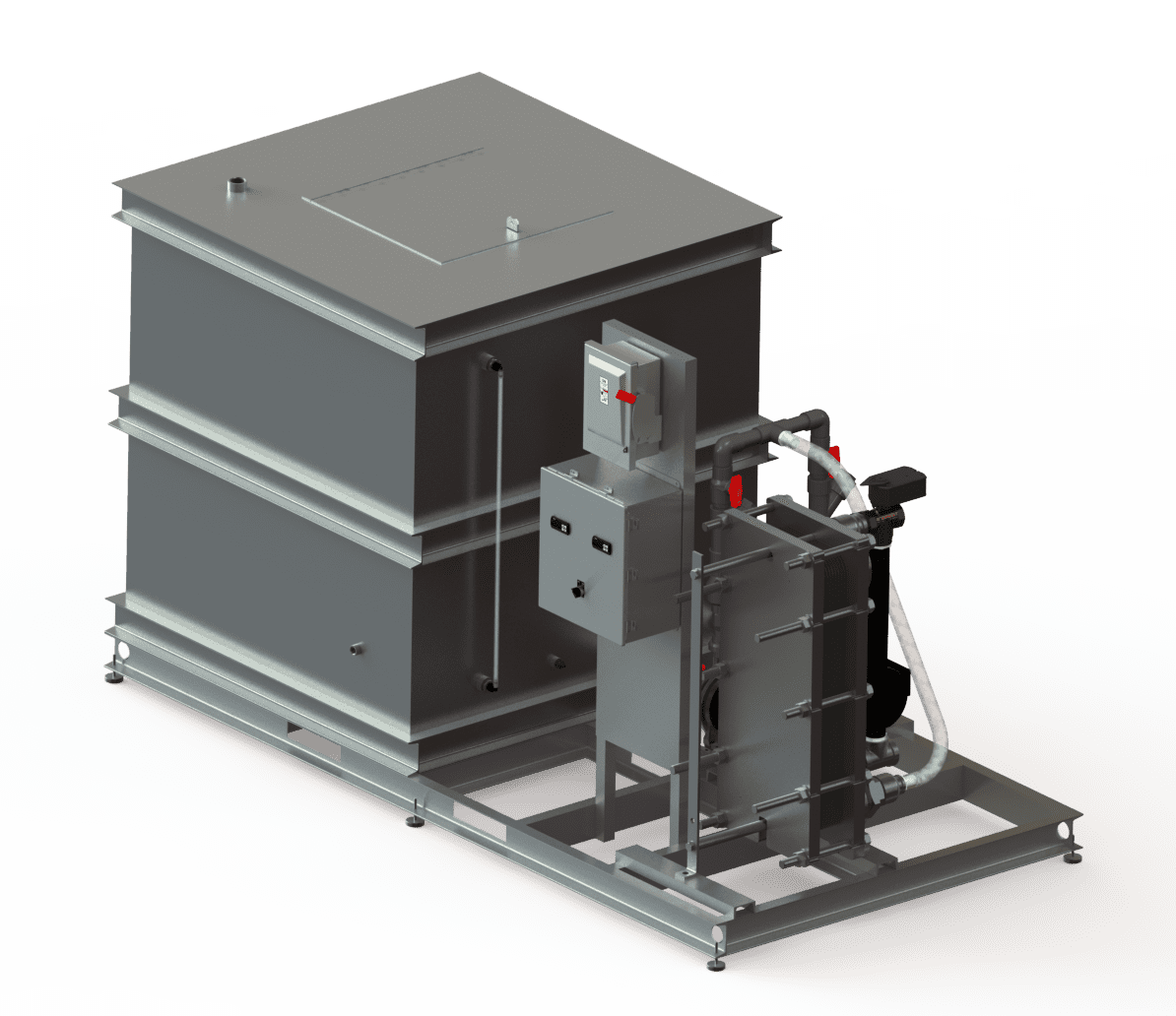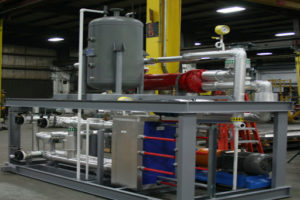Unlocking the Potential of DVS Heat Transfer Systems in Cutting-Edge Thermal Management
Wiki Article
Developments in Heat Transfer Solutions: What You Need to Know for Optimal Efficiency
Advancements in Heat transfer systems are changing performance throughout numerous sectors. Advanced products like graphene and nanofluids promise considerable improvements in thermal conductivity. At the same time, the assimilation of IoT and artificial intelligence supplies possibilities for real-time tracking and enhanced power performance. Nonetheless, the landscape of thermal monitoring is rapidly advancing (DVS Heat Transfer Systems). Understanding these advancements is important for accomplishing optimal system performance and sustainability in the future. What details improvements are forming this transformation?Emerging Materials for Improved Heat Transfer

Advanced Heat Exchanger Styles
While conventional Heat exchangers have actually offered their purpose in numerous applications, progressed styles are now arising to meet the increasing needs for performance and efficiency. These ingenious designs, such as plate, shell-and-tube, and finned-tube Heat exchangers, include improved surface and improved flow patterns to boost thermal transfer prices. Furthermore, small layouts enable for lowered room needs without jeopardizing effectiveness. Advanced products, such as composites and corrosion-resistant alloys, in addition boost sturdiness and efficiency under severe problems. Simulation modern technologies and computational liquid characteristics are increasingly utilized to fine-tune these styles, making certain peak Heat transfer characteristics. As sectors seek to lessen energy usage and take full advantage of output, the adoption of innovative Heat exchanger layouts is essential in attaining these purposes.The Function of Nanotechnology in Heat Transfer
Nanotechnology plays a crucial function in enhancing thermal conductivity within Heat transfer systems. By controling products at the nanoscale, scientists have achieved significant improvements in energy effectiveness. These developments not just optimize efficiency but likewise contribute to even more sustainable power options.Enhanced Thermal Conductivity
Considerable innovations in thermal conductivity have arised via the application of nanotechnology, changing Heat transfer systems across numerous industries. By incorporating nanoparticles right into Heat transfer liquids and materials, researchers have actually accomplished amazing rises in thermal conductivity. These nanoparticles, such as carbon nanotubes, graphene, and steel oxides, enhance the Heat transfer properties because of their high surface location and one-of-a-kind thermal attributes. The resulting composites show improved performance in applications varying from electronic devices cooling systems to renewable energy innovations. The capability to customize the size, form, and make-up of nanoparticles permits for optimized thermal management remedies. As a result, nanotechnology remains to play a pivotal role in the advancement of a lot more reliable and efficient Heat transfer systems, leading the way for boosted commercial applications.
Power Efficiency Improvements

Integration of IoT in Heat Transfer Equipments
The integration of IoT in Heat transfer systems presents the execution of clever sensing units that enhance operational effectiveness. These sensors allow real-time information monitoring, permitting for immediate adjustments and optimizations. This technological development has the possible to considerably boost performance and energy administration in Heat transfer applications.Smart Sensors Execution
As Heat transfer systems evolve, the combination of smart sensing units with the Internet of Points (IoT) has actually emerged as a transformative method. These sensors make it possible for real-time monitoring of stress, flow, and temperature level prices, improving system efficiency and integrity. By accumulating and transferring data, they help with positive maintenance, reducing the threat of system failings. Additionally, smart sensing units add to power financial savings by refining operational parameters based upon environmental conditions. Their ability to evaluate fads and abnormalities enables for informed decision-making, ensuring peak efficiency of Heat transfer systems. As markets increasingly adopt this innovation, the execution of smart sensing units stands to change exactly how Heat transfer systems are managed, paving the means for greater sustainability and improved performance end results.Real-Time Data Monitoring
Just how can real-time data keeping an eye on enhance the efficiency of Heat transfer systems? By integrating Internet of Points (IoT) innovation, Heat transfer systems can take advantage of constant data collection from wise sensors. This real-time monitoring enables instant evaluation of stress, flow, and temperature level prices, making it possible for drivers to determine inadequacies immediately. As a result, adjustments can be made to optimize performance, reduce power consumption, and expand tools life-span. Additionally, anticipating upkeep can be applied, lessening unexpected downtime and pricey fixings. The capacity to visualize efficiency metrics through control panels improves decision-making, cultivating a proactive strategy to system monitoring. Eventually, real-time information keeping track of not just enhances functional efficiency yet likewise adds to sustainability goals within commercial procedures.Power Efficiency and Sustainability Trends
Energy performance and sustainability trends are reshaping the landscape of Heat transfer systems, driving innovation and conformity throughout various markets. Organizations are increasingly prioritizing energy-efficient layouts to reduce operational prices and minimize environmental effects. The combination of renewable energy sources is ending up being a lot more prevalent, enabling Heat transfer systems to run sustainably while satisfying regulative needs. In addition, advancements in materials and innovations promote lower energy consumption and enhance general performance. Lifecycle evaluations are likewise getting grip, permitting business to examine the ecological effect of Heat transfer systems from production to disposal. This focus on sustainability not just supports business duty however also positions companies competitively in a market where consumers progressively favor green options. Energy efficiency and sustainability remain important factors to consider for future growths in Heat transfer innovation.Innovations in Thermal Management Solutions
While the need for reliable Heat transfer remains to rise, advancements in thermal administration remedies are arising to resolve both performance and sustainability obstacles. Advanced materials, such as stage modification materials and nanofluids, are being developed to enhance Heat transfer performance - DVS Heat Transfer Systems. These products enhance thermal conductivity and permit far better temperature level guideline in various applications. In addition, innovations like active thermal control systems are gaining grip, enabling real-time modifications to take care of Heat circulation effectively. These systems add to power cost savings and minimize the environmental influence of thermal procedures. Moreover, the combination of IoT in thermal administration helps with surveillance and predictive upkeep, making sure optimized performance and longevity of Heat transfer systems. In general, these technologies represent considerable strides toward more lasting thermal management methodsFuture Directions in Heat Transfer Technology
Arising developments in thermal monitoring remedies signal a promising future for Heat transfer innovation. Scientists are significantly concentrating on developing materials with premium thermal conductivity and enhanced energy efficiency. Technologies such as nanofluids, which include put on hold nanoparticles, use considerable improvements in Heat transfer performance. Furthermore, the assimilation of smart products that adjust to differing temperature level conditions is obtaining traction, enabling even more responsive and efficient systems. The increase of additive manufacturing strategies is also allowing the design of complex Heat exchanger geometries that enhance fluid circulation. The implementation of device learning algorithms is anticipated to transform the optimization of Heat transfer systems, assisting in predictive upkeep and performance enhancement. Collectively, these innovations are positioned to change the landscape of Heat transfer innovations in different markets.
Often Asked Inquiries

Just how Do I Select the Right Heat Transfer System for My Application?
Selecting the appropriate Heat transfer system includes evaluating application requirements, including temperature arrays, liquid buildings, and efficiency demands. Assessing system types, upkeep considerations, and cost-effectiveness also plays a crucial duty in making an educated decision.What Are the Maintenance Needs for Advanced Heat Exchangers?
Upkeep demands for innovative Heat exchangers usually include normal assessments, monitoring for leaks, cleansing of surface areas, and assuring suitable circulation prices. Sticking to supplier guidelines warranties reliable procedure and extends the equipment's life expectancy.
Just How Do Ecological Elements Impact Heat Transfer Efficiency?
Ecological elements considerably affect Heat transfer effectiveness. Variations in humidity, airflow, and temperature effect thermal conductivity and convective Heat transfer, inevitably impacting system efficiency and demanding factor to consider during the style and procedure of Heat transfer systems.What Safety And Security Standards Put On Heat Transfer Solutions?
Safety and security standards for Heat transfer systems generally consist of guidelines from organizations such as ASME and ASTM. DVS Heat Transfer Systems. These requirements address materials, style, and DVS Heat Transfer Systems operational practices to guarantee reliability, efficiency, and defense versus hazards in numerous applications
Exactly How Can I Repair Common Heat Transfer System Issues?
Fixing common Heat transfer system concerns includes looking for leaks, making certain proper liquid circulation, checking insulation integrity, and validating temperature differentials. Identifying these elements can aid maintain system performance and avoid additional complications.Nanotechnology plays a necessary function in improving thermal conductivity within Heat transfer systems. Significant improvements in thermal conductivity have actually emerged through the application of nanotechnology, transforming Heat transfer systems throughout numerous industries. Innovations in thermal conductivity via nanotechnology have paved the means for amazing renovations in power effectiveness within Heat transfer systems. Energy performance and sustainability trends are reshaping the landscape of Heat transfer systems, driving technology and compliance across various markets. The assimilation of IoT in thermal monitoring helps with surveillance and anticipating upkeep, guaranteeing enhanced efficiency and durability of Heat transfer systems.
Report this wiki page